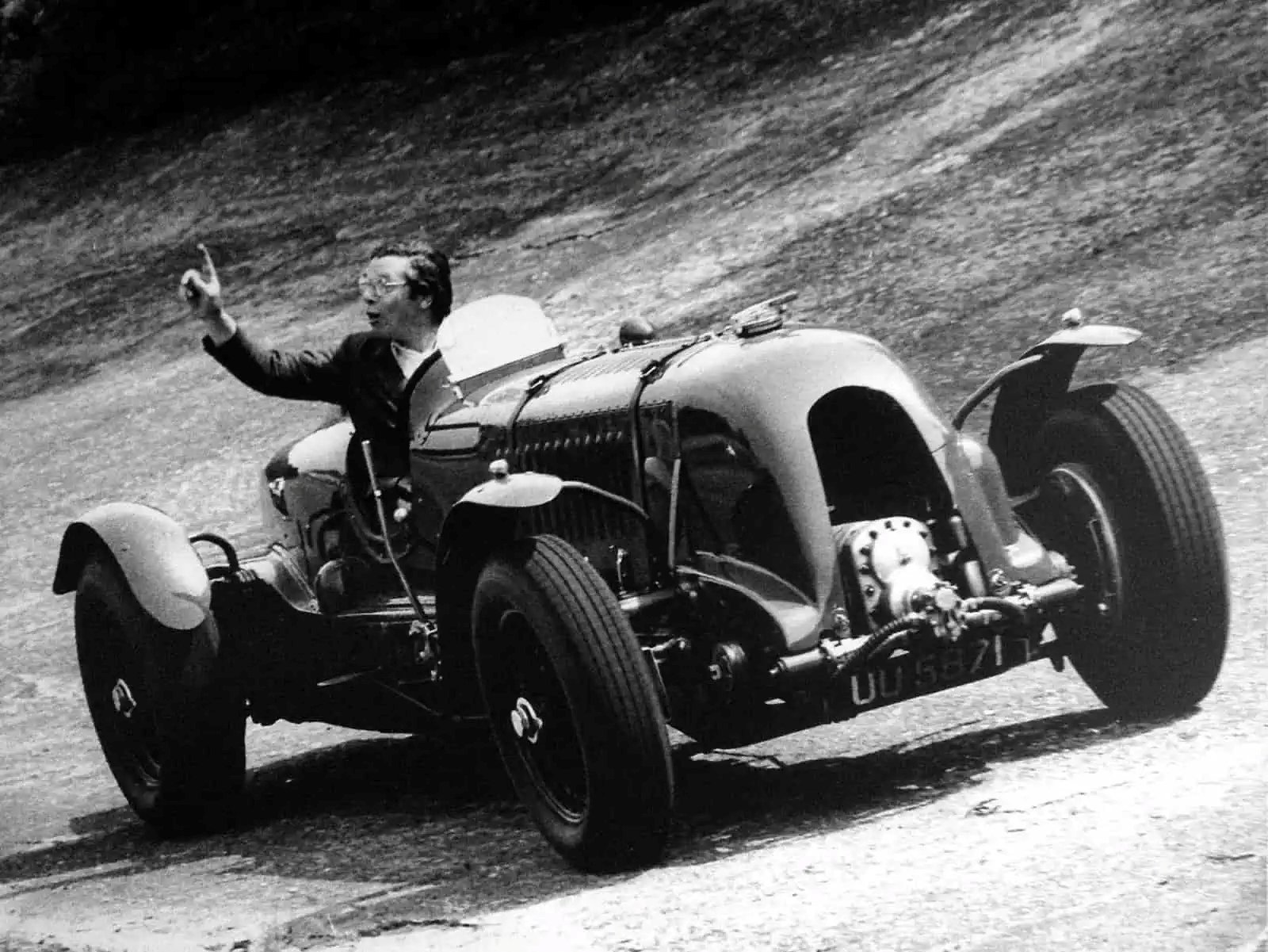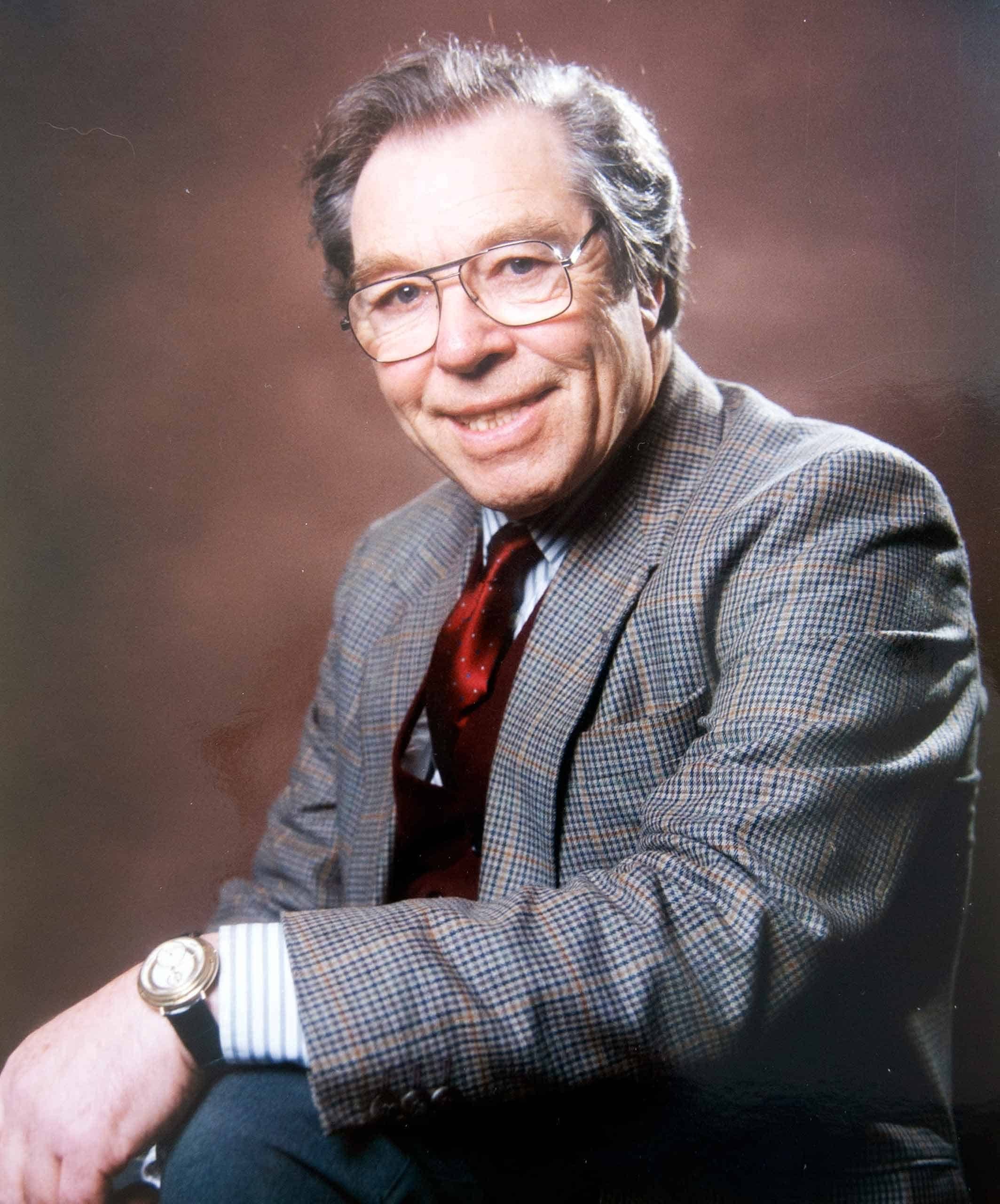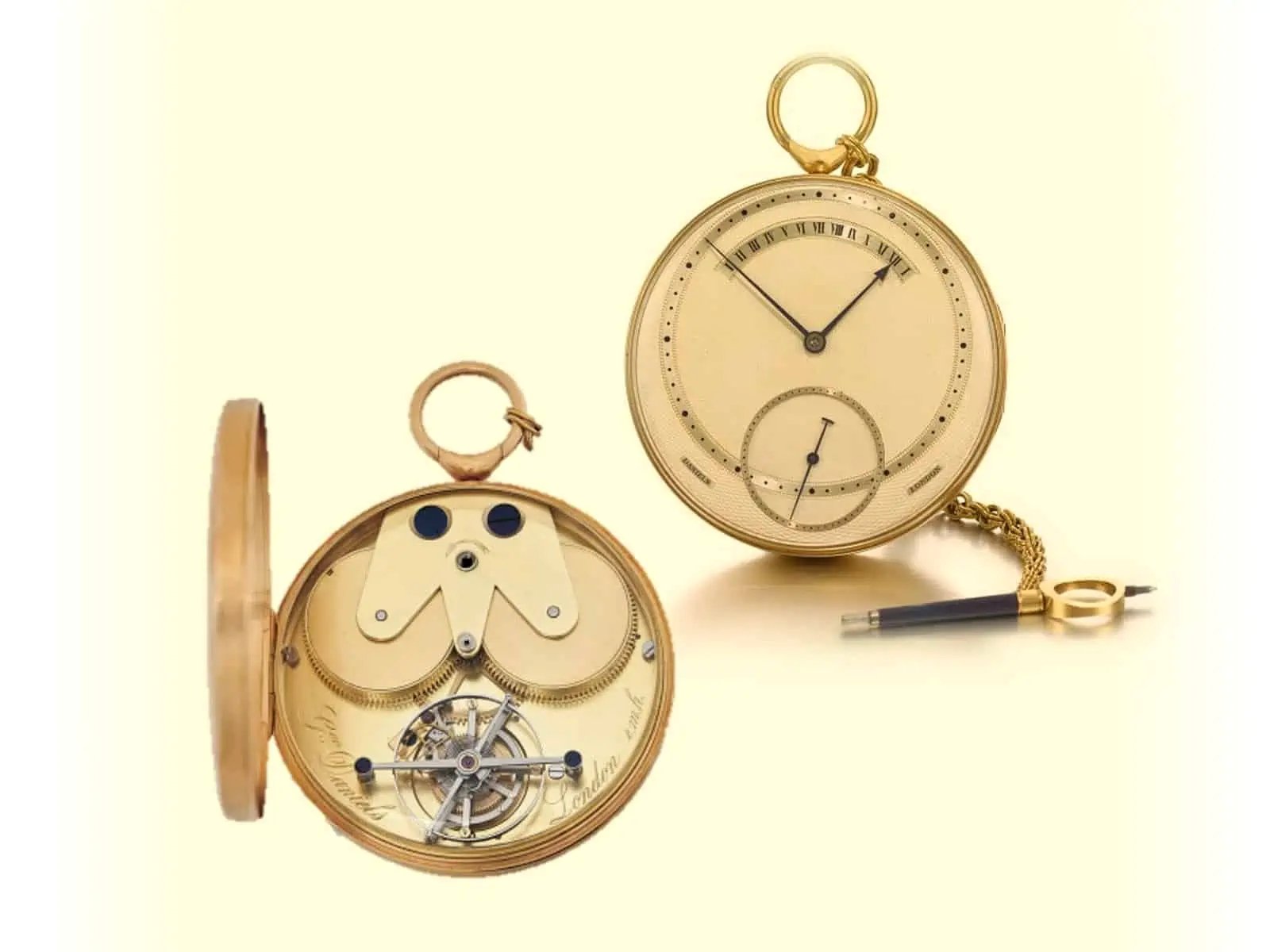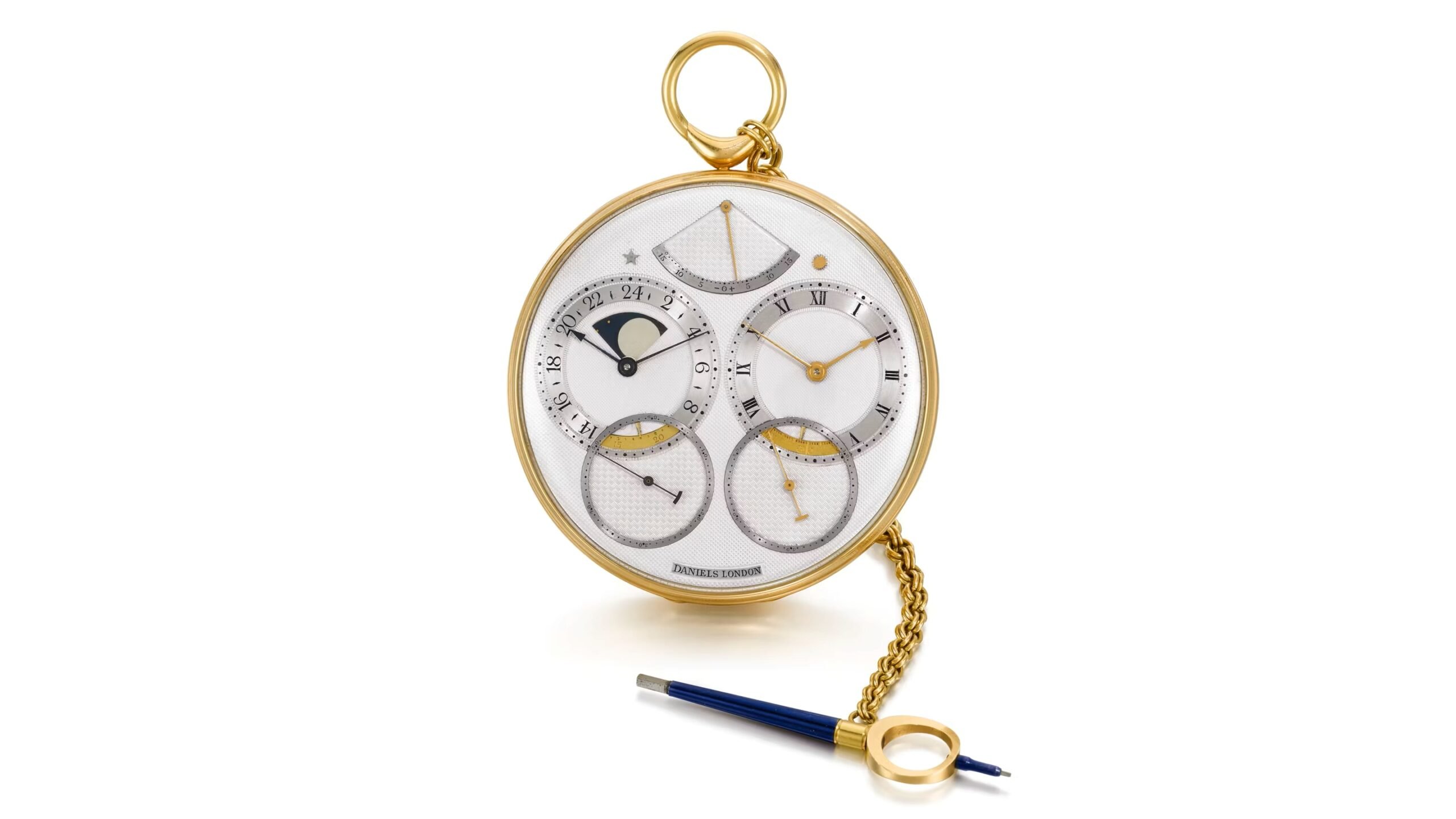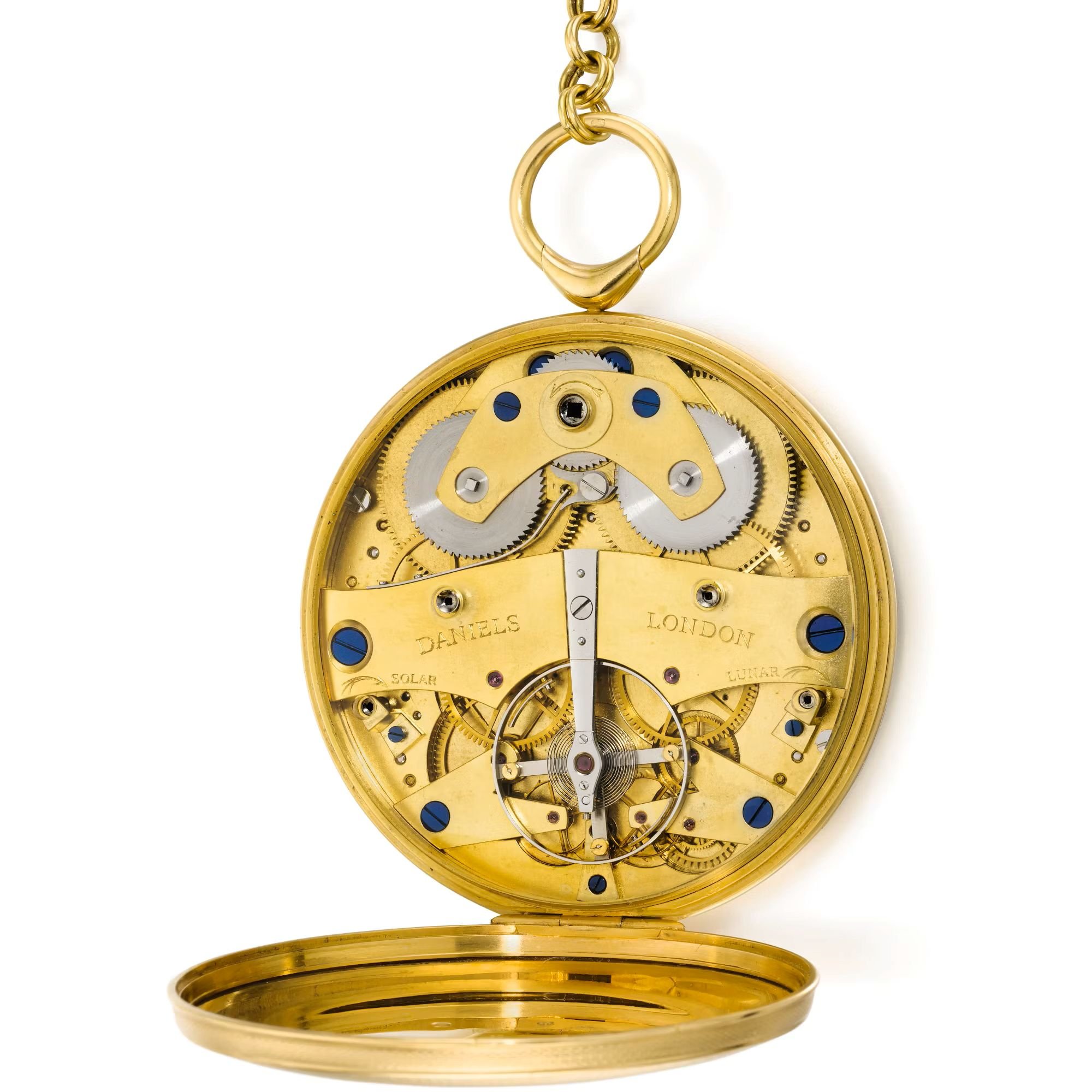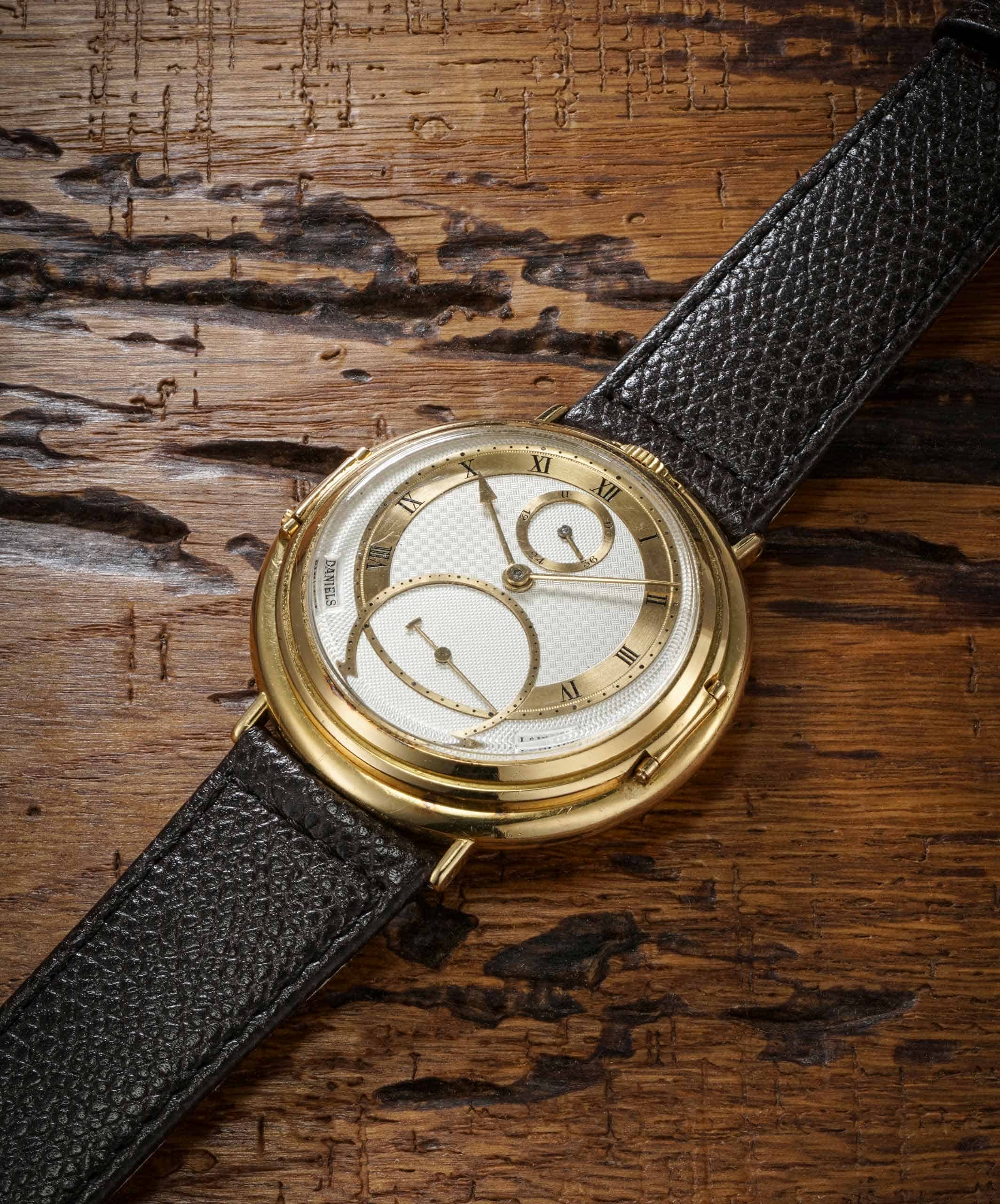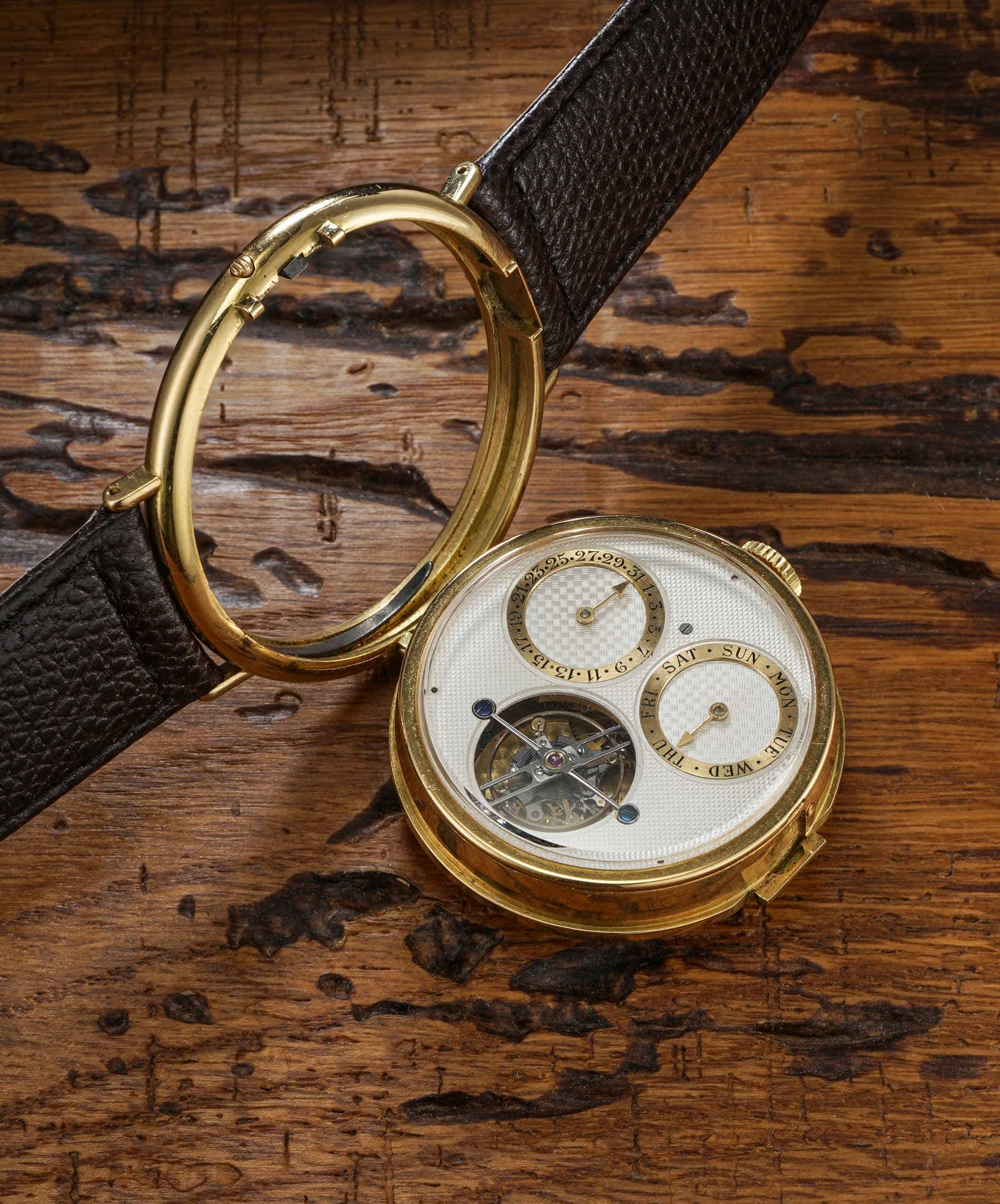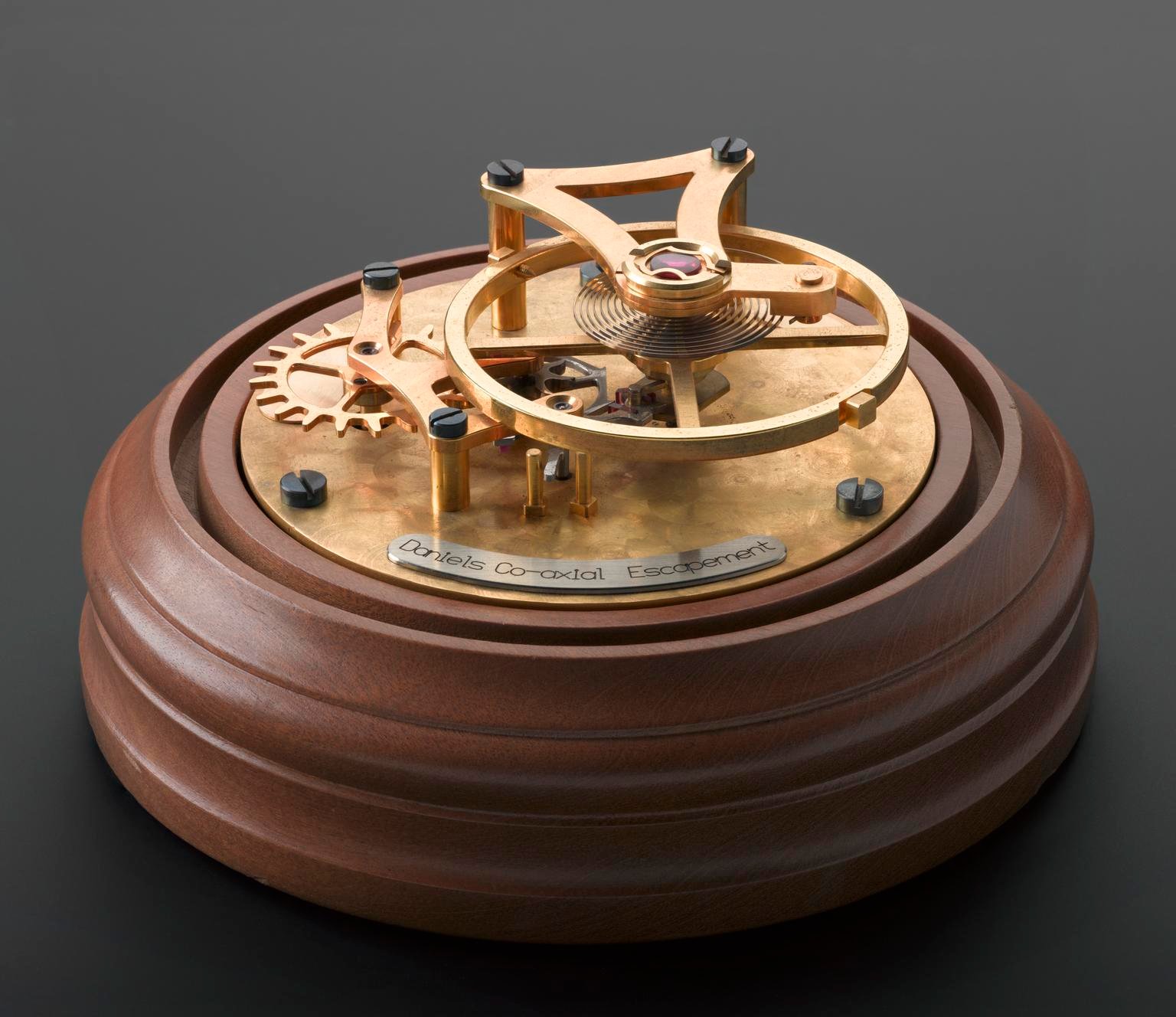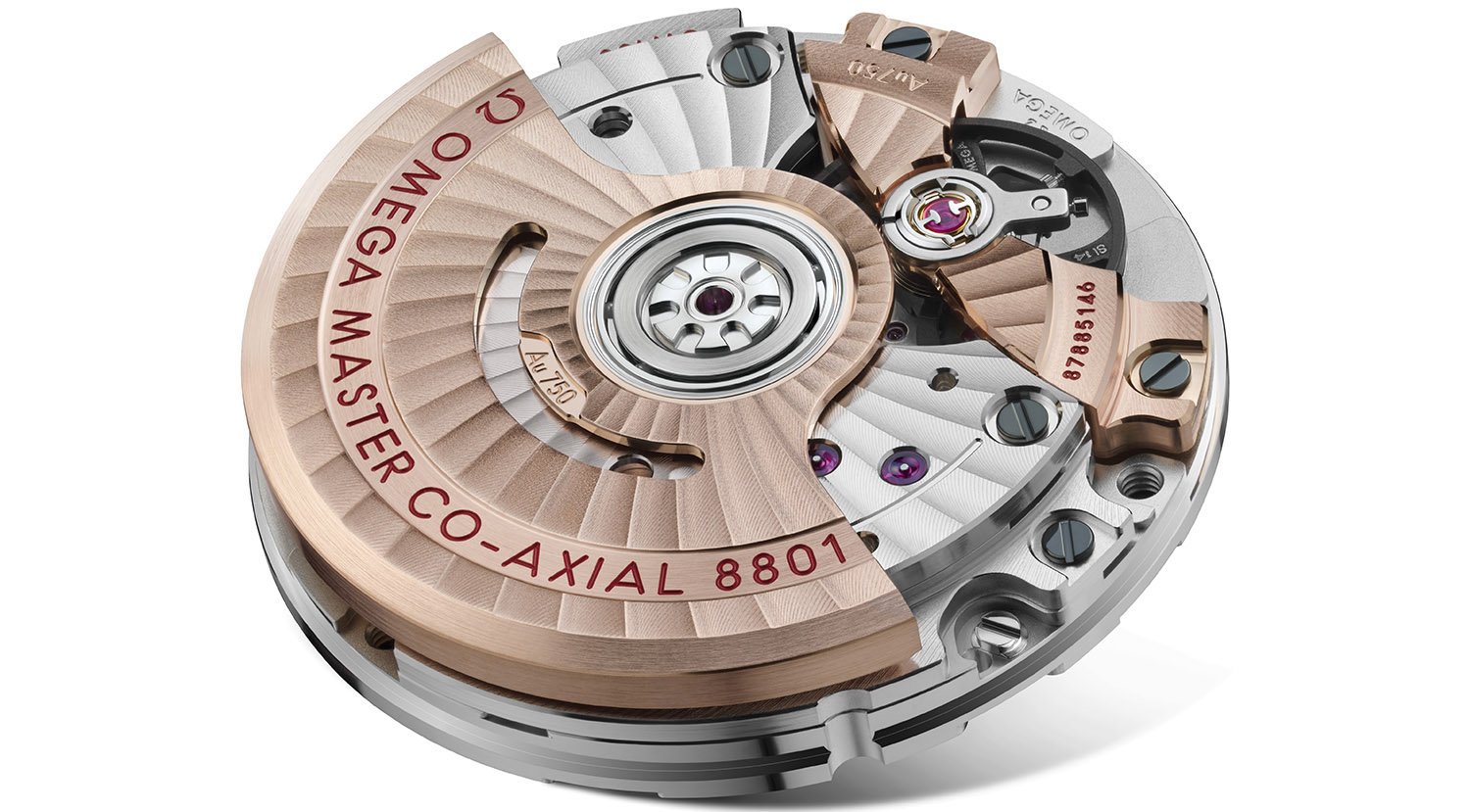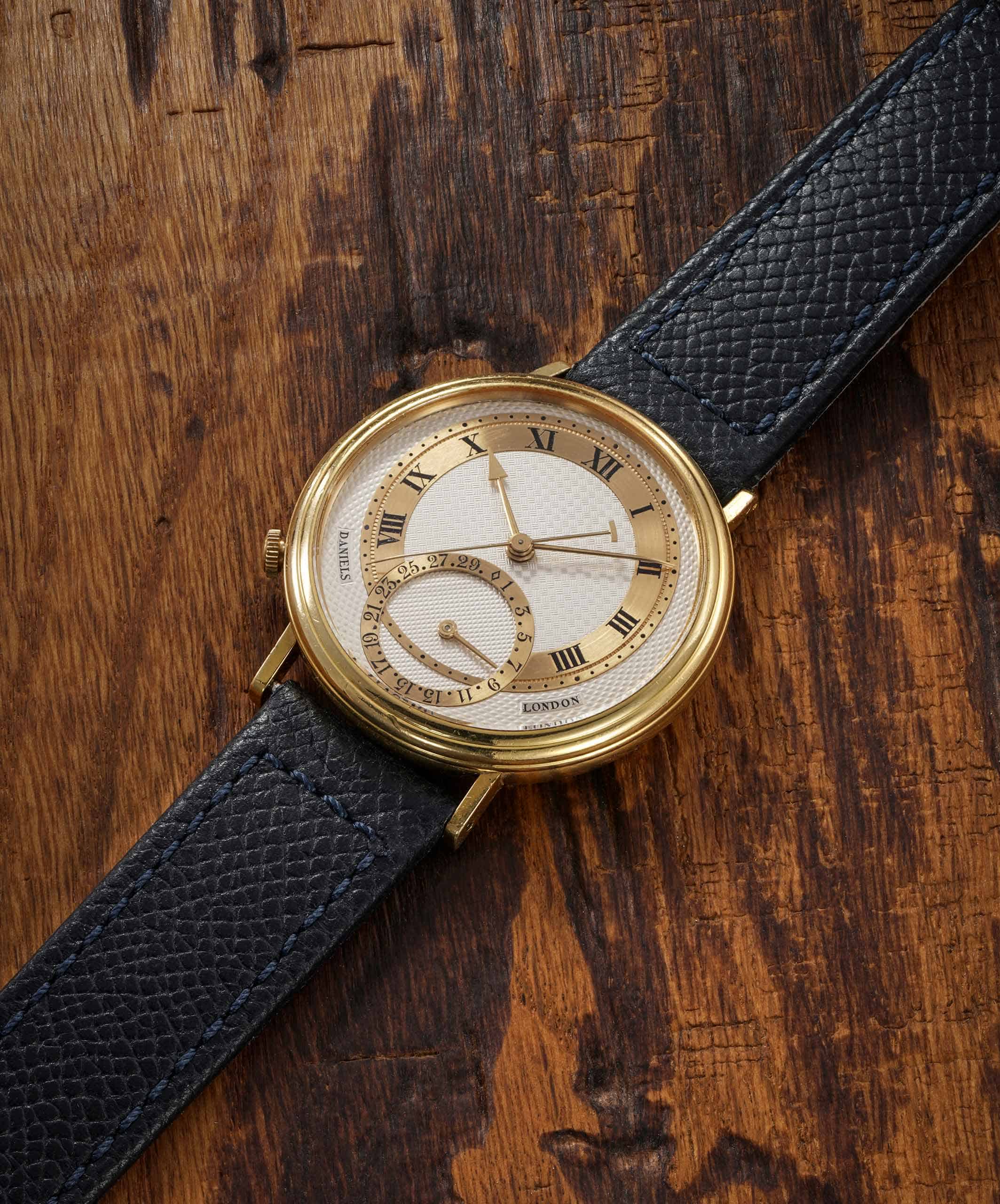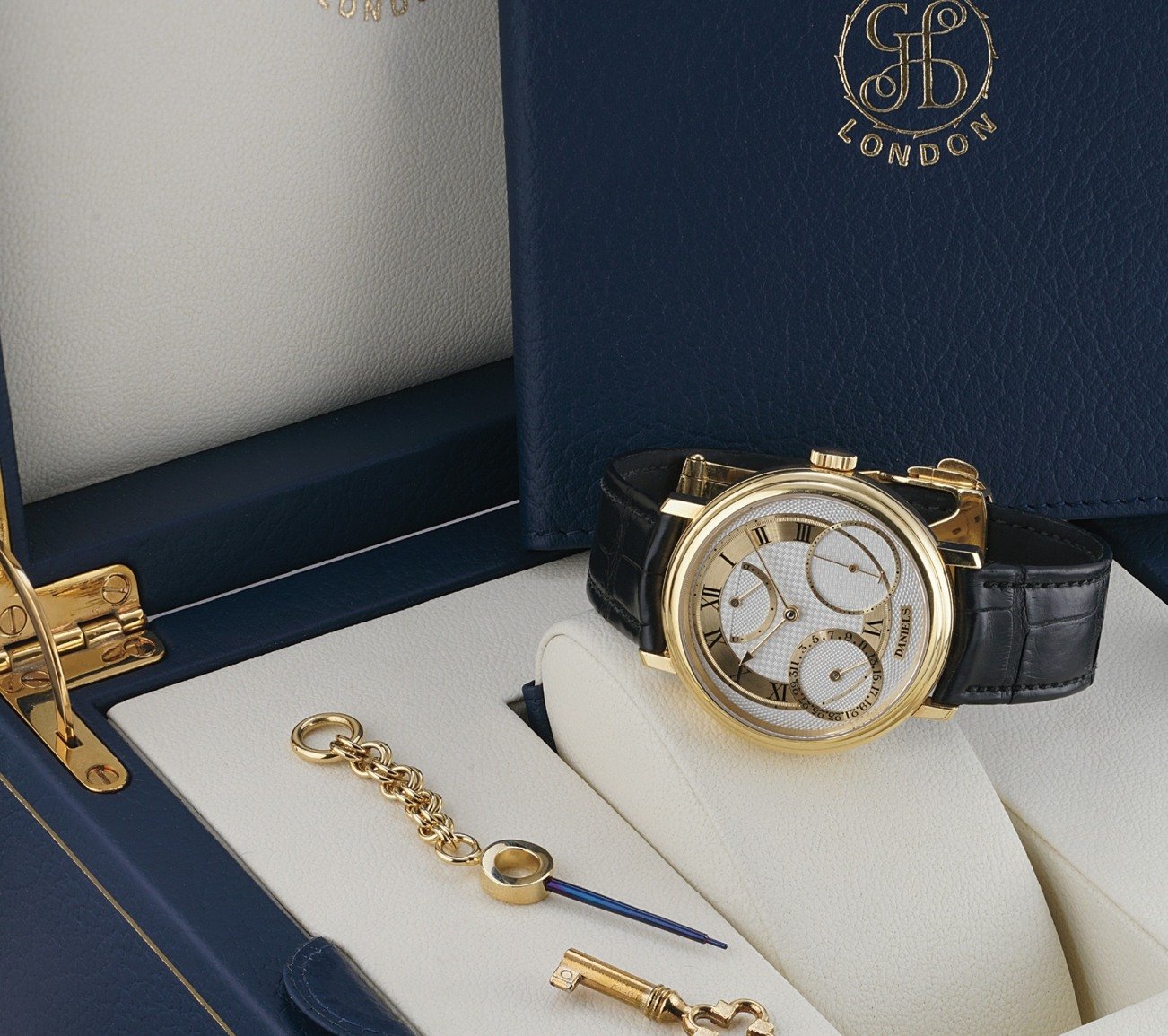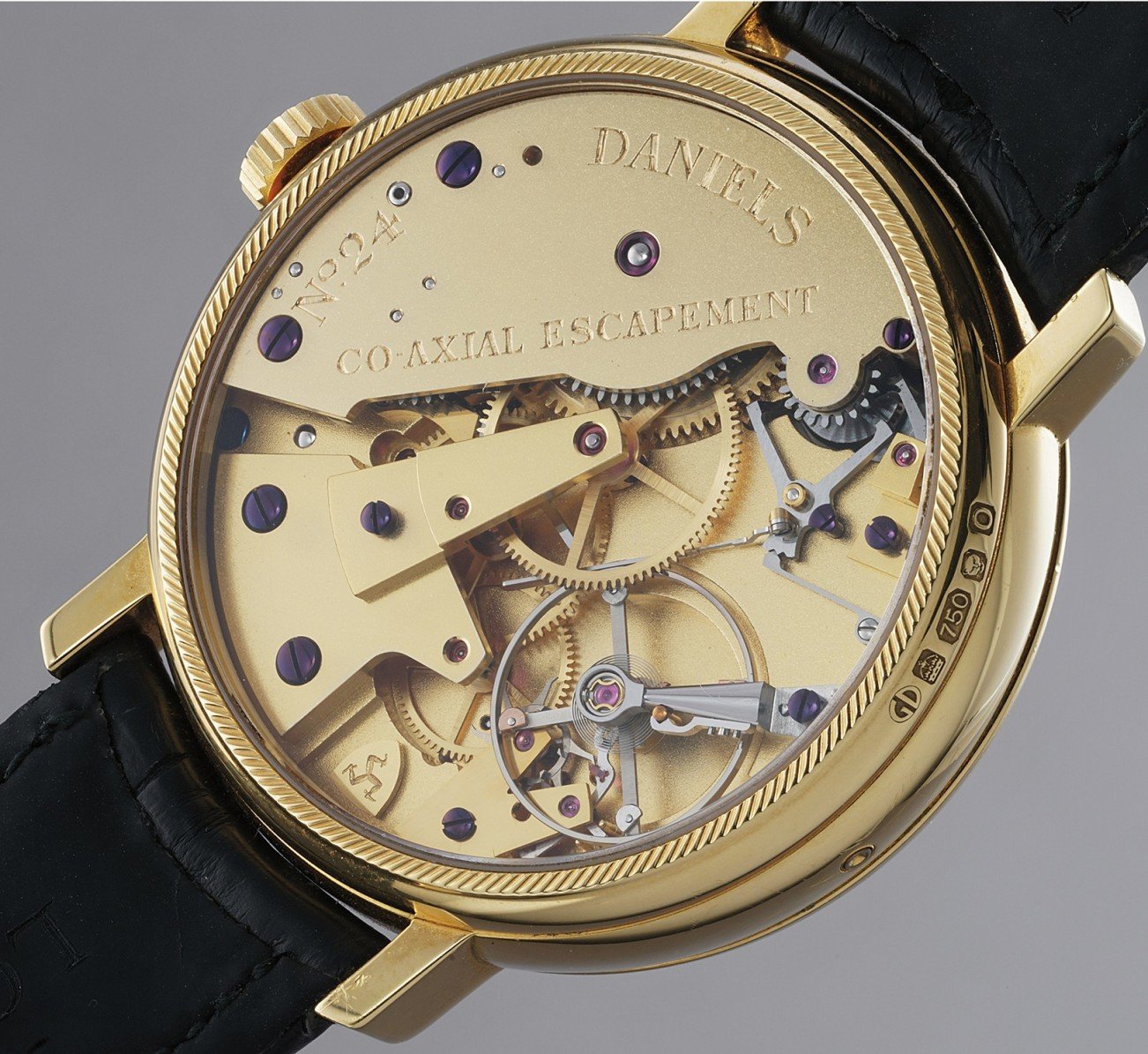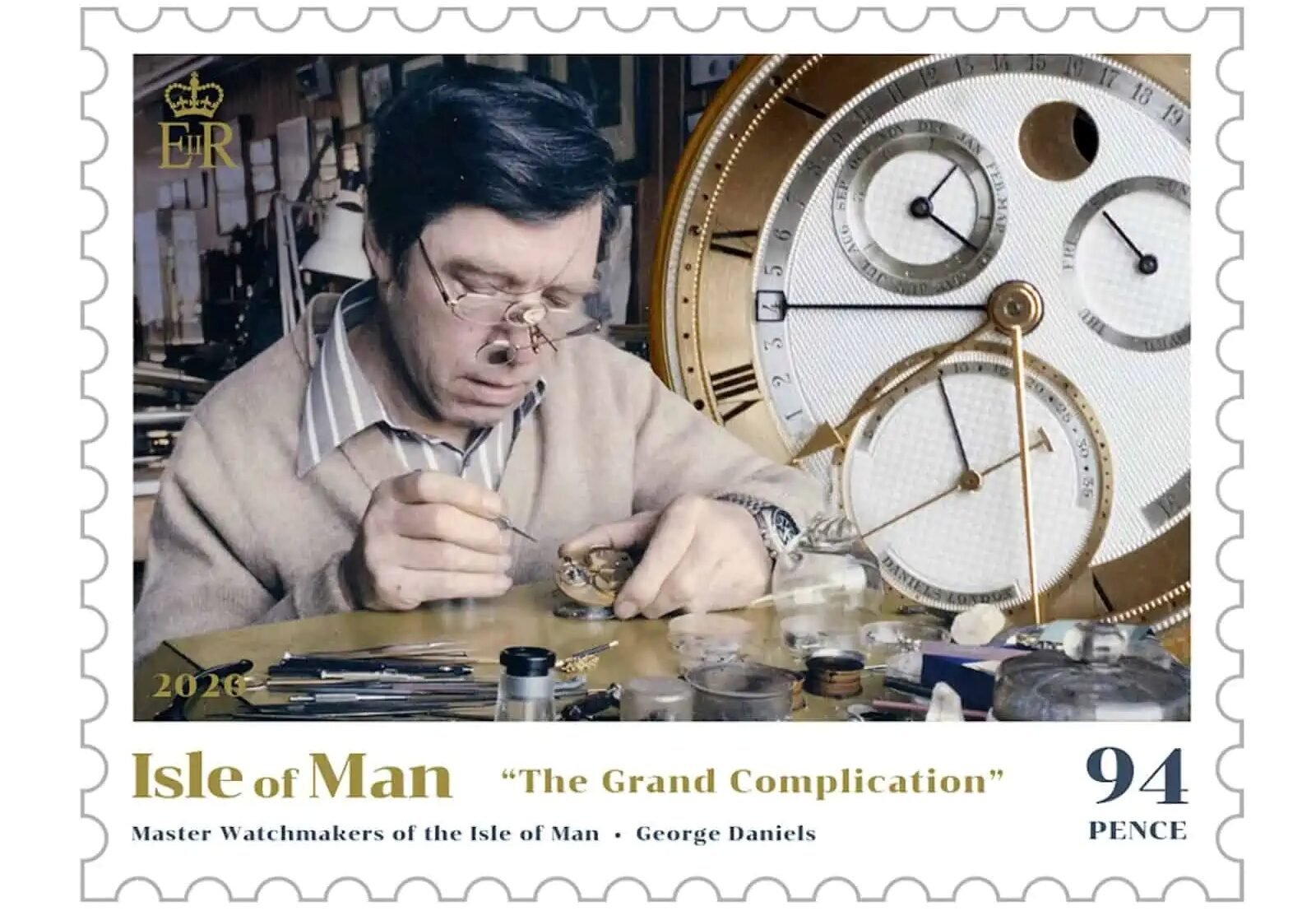Who Was George Daniels? — Fighting Quartz In Times Of Crisis
We started our series about the people behind watch brands’ names with Abraham-Louis Breguet, arguably the greatest watchmaker ever. This week, instead of presenting you with another name behind a brand, we would like to introduce you to watchmaker/inventor George Daniels, who wrote an essential book about Breguet’s watchmaking philosophy. Like Breguet, Daniels got caught in a revolution. The rise of quartz movements in the late 1960s and early ’70s threatened the very existence of mechanical watchmaking. Daniels worked hard to sustain the traditional craft by inventing numerous innovations and the famous Co-Axial escapement, now used by Omega and Roger W. Smith. He is also the father of modern independent watchmaking since he essentially was a one-man brand. But there is more to the man, so we ask, “Who was George Daniels?”
Dr. George Daniels CBE (London, August 19th, 1926 – Isle of Man, October 21st, 2011) was more than a watchmaking genius. People who knew and worked with him will tell you he was a captivating storyteller. Those who have read his books can attest that his writing style was equally enticing. His passion stretched beyond horology, as his impressive car collection proves. His heart specifically went out to the Bentleys that he collected and raced. To give you an example of the quality of his collection, one of the highlights was the Bentley 4½-Litre Supercharged Single-Seater (“Blower No.1”). This car was developed and driven by Sir Henry “Tim” Birkin, and it set the Brooklands Outer Circuit Lap Record in 1931 at over 137 mph. However, the world of watchmaking remembers him for his creations in watchmaking, not his collecting and racing of classic cars.
Who was George Daniels? — One chair and a revelation
George Daniels was born in Edgware, North London, in 1926, into a family of 11 children. The family was of very modest means. Later in life, Daniels told an interviewer that they only had one chair in the house. But that was not the worst part. His childhood was not just marked by poverty but also by a violent, alcoholic father — though one with a knack for repairing radios. Seeking escape from the turmoil at home, Daniels spent much of his time on the streets. At just five years old, he stumbled upon a broken watch and became entranced by its intricate workings. “It was like seeing the center of the universe,” he later recalled. It was a revelation that determined the course of his life’s work.
He left school at age 14 and found a job in a mattress factory while repairing watches in his spare hours, often going from door to door to offer his services. During his army service in Suez in 1945, he continued repairing watches for fellow soldiers, earning so much that he scarcely needed his army pay for two years. Once demobilized, with just £50 to his name, Daniels set up a business. He went on to create a series of increasingly ingenious mechanical watches deeply inspired by the work of Breguet. He taught himself how to craft every single component by hand — later known as the Daniels Method. Later, he attended City University in London to study horology formally. What began as a childhood fascination had become his profession.
Another chance encounter
An encounter with fellow petrolhead Cecil “Sam” Clutton was pivotal in Daniels’ life. Clutton introduced him to affluent key figures in the world of exclusive timepieces. In 1969, Daniels crafted a watch for Clutton priced at £1,900. Decades later, it sold in the United States for over £200,000. During his 60-year career, Daniels would handcraft just 37 watches, each a costly creation that took roughly a year to complete. These timepieces were entirely handcrafted from raw materials. Producing a single watch demanded mastery of more than 30 distinct skills and over 2,500 hours of meticulous work.
Roger W. Smith, Daniels’ protégé, once reflected: “Throughout his life, George created what I believe to be one of the most important bodies of work in horological history, encompassing inventions that explored some of the most fascinating complications in watchmaking. But above all, he was the first person ever to handcraft a complete watch — from start to finish — to such a high technical and aesthetic standard. Where traditional watchmakers relied on dozens of specialists for components, George mastered every one of those individual crafts himself.”
Moving to the island
Daniels moved to the Isle of Man for tax reasons after his business took off — proof that geniuses are not always disconnected scatterbrains but can be very grounded, practical, and pragmatic. The watches he made on the Isle of Man were regarded by many as the most technically sophisticated in the world, earning him widespread acclaim and numerous awards. One of his creations, though not his most complicated, became his most famous, and it was a perfect example of his watchmaking philosophy.
The Space Traveller was made in the 1980s for a client. Daniels also made The Space Traveller II, which he wore himself, and he described these watches as being perfect for “your package tour to Mars.” The watchmaker was not just obsessed with vintage Bentleys and watchmaking but also with space exploration. The Space Traveller was created to honor the American landing on the Moon.
Fighting quartz
Daniels worked in turbulent times. He didn’t have to fear the guillotine, as Breguet had, but the mechanical world of watches was threatened. A perfect storm arose that almost completely wiped out the centuries-old craft of watchmaking. The rise of Japanese quartz watches is often cited as the leading cause of the wave of bankruptcies that struck Swiss watch brands during the Quartz Crisis. While this is true, it tells only part of the story. The industry’s collapse was also fueled by a convergence of broader macroeconomic pressures — global recessions, the oil crisis, and shifting currency exchange rates. These elements, plus the rapid technological disruption brought by quartz movements, formed a perfect storm that reshaped the world of watchmaking.
Like a watchmaking Don Quixote, Daniels crafted complicated timepieces from start to finish by himself, fully convinced that this craft would survive. His belief proved to be correct. In hindsight, the Quartz Crisis might have been the best thing that could have happened to mechanical watchmaking. With the industry having repositioned itself in a parallel universe of emotions, the strict laws of functionality no longer applied to mechanical watches. To remain relevant in the newly shaped world, excellent craftsmanship, exclusivity, and storytelling were now key factors. Thankfully, every Daniels creation ticked those boxes.
Re-inventing the escapement
Many will know George Daniels for his groundbreaking invention, the Co-Axial escapement. It is one of the most significant advancements in modern watchmaking, which Omega later adopted in 1999. Interestingly, Daniels first conceived the Co-Axial escapement in 1975. He initially tested it within a pocket watch before adapting the mechanism for wristwatches. Daniels used an Omega Speedmaster “Mark 4.5” with a Lemania-based caliber 5100 as a trial watch. He tried to sell the concept to several brands, but none showed enough interest. Only in 1994 did Omega understand the potential of the Co-Axial escapement. Five years later, the revolutionary escapement finally made it into the world of production wristwatches.
Daniels had always had a deep interest in escapements, and the idea of the Co-Axial escapement is to dramatically reduce sliding friction. In a conventional lever escapement, the pallet stones slide across the teeth of the escape wheel, generating considerable friction and wear over time. Daniels’ Co-Axial design introduces a more sophisticated mechanism with an intermediate wheel and two escape wheels on the same axis — hence, Co-Axial. In this construction, the interaction between the balance wheel’s roller jewel and the lever’s impulse jewel delivers a radial, “pushing” impulse. By separating the locking and impulse actions, the design reduces sliding friction between the pallet stones and the escape wheel’s teeth, enhancing efficiency, accuracy, and longevity.
A Co-Axial escapement needs less lubrication than a lever escapement, so it requires less maintenance. People criticized the first movements with the new escapement for sharp edges on the pallet stones and escape wheel, which caused severe wear and tear. Teething issues also arose, but Omega overcame them, and now the Co-Axial escapement is a hallmark of the brand.
George Daniels must-reads
The autobiography All in Good Time tells the extraordinary life story of George Daniels, offering an inside look into the experiences that made the man. Daniels’ first book, Watches, was co-authored by Cecil “Sam” Clutton. First published in 1965, the book quickly gained a reputation as the foremost general history text on the subject. It first got reprinted and updated in 1979, and in 2022, the latest edition, featuring over 600 illustrations, came out. It is an essential book, just like his later book, Watchmaking, is. In it, Daniels presents a detailed, step-by-step account of how a movement is made. Each stage is clearly illustrated through line drawings and concise explanatory captions. Daniels uses accessible words, avoiding overly complex technical language. As you would expect, Daniels’ fascination with escapements shines through, and he describes numerous variations, including several that he invented.
The Art of Breguet is the book I mentioned in the intro. It’s a richly illustrated study of the work of Abraham-Louis Breguet, authored by the “Breguet of the 20th century.” Daniels dives deep into Breguet’s horological philosophy and clarifies many of the long-misunderstood aspects of his genius. The book contains more than 100 line drawings of Breguet’s technical achievements. Accompanying each drawing is a detailed analysis of the notable mechanisms, workings, and functions.
Private life
The five-year-old boy who found a broken watch in 1931 became a master craftsman and the 20th century’s most essential and influential watchmaker. Still, Daniels also experienced his share of personal sorrow in life. His marriage to Juliet Marryat in 1964 ended in divorce, and he became estranged from his only child, a daughter. Shortly before Daniels’ mother died at age 91, she expressed remorse for his difficult upbringing. She apologized to him for what she called “the miserable home life.”
Despite these difficulties, George Daniels remained tirelessly dedicated to his craft and worked until age 84. He was the man who showed the likes of Dufour, Ferrier, Lederer, and Journe how to work successfully as an independent watchmaker. By the time of his death in 2011, he had collaborated with his protégé, Roger Smith, to produce eight watches yearly — each with prices well above £100,000. His renowned Space Traveller I was auctioned for US$4.6 million in 2019, setting a world record for any English watch at auction. In 2017, his estate was valued at £21 million.
Remembering George Daniels
George Daniels occupies a singular place in modern horology as the inventor of the revolutionary Co-Axial escapement. It was the first significant advancement in portable mechanical timekeeping since the lever escapement’s inception in 1759. Daniels was awarded his Doctor of Science (DSc) degree by City University London during his career, and was appointed Member of the Most Excellent Order of the British Empire (MBE) in 1981 and Commander of the Order of the British Empire (CBE) in 2010 for services to horology. He also received, among many other recognitions, the Gold Medal of the British Horological Institute.
A blue plaque marks Dr. George Daniels’ former home and workshop in Ramsey on the Isle of Man. Additional tributes include a commemorative set of Isle of Man stamps celebrating his achievements and lasting impact on horology. Also, the George Daniels Educational Trust continues to support students through scholarships in his name.

